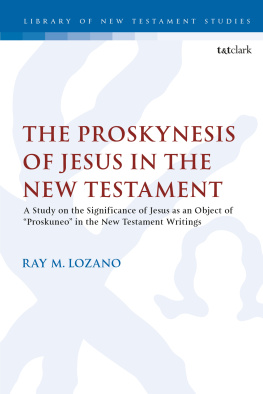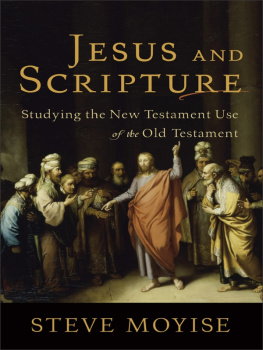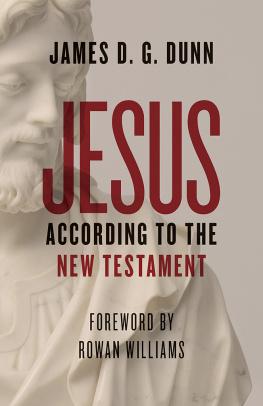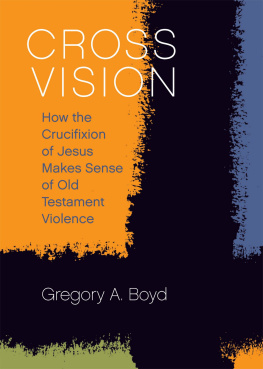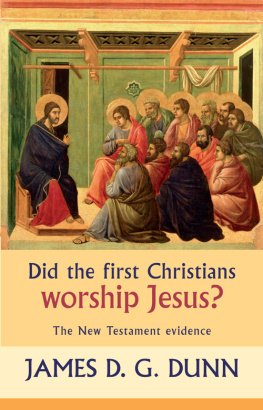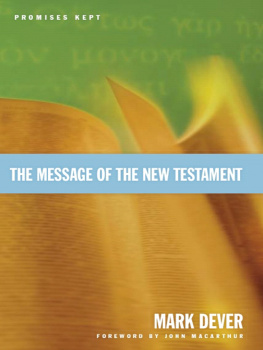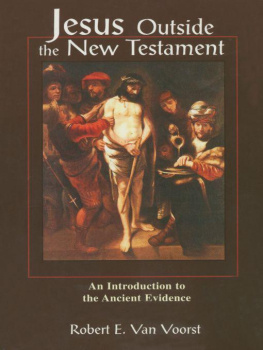Library of New Testament Studies
Formerly the Journal for the Study of the New Testament Supplement series
Editor
Chris Keith
Editorial Board
Dale C. Allison, John M.G. Barclay, Lynn H. Cohick, R. Alan Culpepper, Craig A. Evans, Robert Fowler, Simon J. Gathercole, Juan Hernandez Jr., John S. Kloppenborg, Michael Labahn, Love L. Sechrest, Robert Wall, Catrin H. Williams, Britanny Wilson

The Proskynesis of Jesus in the New Testament
A Study on the Significance of Jesus as an Object of in the New Testament Writings
Ray M. Lozano

Contents
I am deeply grateful for the many people who came alongside me and supported me in various ways throughout my PhD studies at the University of Edinburgh. I am especially thankful for my supervisor, Professor Larry Hurtado, who not only provided helpful guidance and feedback every step of the way but also saw me through the struggles of coming up with a new research topic when my original project had to be abandoned so late in my studies (even having on hand a few alternative research topics to explore!). To my examiners, Professor Grant Macaskill and Professor Paul Foster, many thanks are due for their encouraging comments and helpful suggestions in the assessment of my work. I would also like to thank Professor Helen Bond for her involvement in the early stages of my research, and for the many opportunities to attend and host receptions for various stimulating CSCO events.
Although I became much more of a hermit in my studies than I would have liked to have been, I was still fortunate to be blessed with many lifelong friendships made with fellow PhD students and faculty at New College, with colleagues at Prestonfield House, and with church family at Duncan Street Baptist Church. I am especially thankful for my family back home in California. I could not have made it without their constant support, prayers, and the many late-night Skype chats.
Lastly, I am most grateful to my Lord and Savior, Jesus Christ, to whom this work is ultimately dedicated.
An intriguing literary feature of a number of NT writings that has received very little adequate, comprehensive scholarly attention is the depiction of Jesus as a recipient of that is, as an object of the Greek verb . Could it be that in the NTs numerous depictions of Jesus as an object of a term that is otherwise frequently used in the NT for worship of divine figures and is even occasionally used for reverence rejected by humans and angelshe is portrayed as a divine figure and/or a legitimate recipient of divine worship?
As we have already suggested, there is surprisingly little substantial scholarly discussion of this NT phenomenon as a whole. Moreover, the few who have offered brief assessments of NT usage come to very different conclusions regarding its christological significance. For some, the NT usage suggests Jesus is portrayed as divine in his reception of . In his contribution to the entry in Theological Dictionary of the New Testament , Heinrich Greeven rather boldly stated, When the NT uses , the object is always somethingtruly or supposedlydivine.
Others, however, such as J. Lionel North, come to the exact opposite conclusion: We have nothing here... that requires us to conclude that Jesus is regarded as divine because he is worshipped (i.e., the object of ).
Still others seem to take a view that lies somewhere between the two extreme positions above. In his work Did the First Christians Worship Jesus? , James Dunn includes in his discussion a survey of the NTs worship language, beginning with the use of .
None of these discussions are particularly satisfying as they are all far too brief to address adequately the issue at hand. Indeed, conclusions are reached (and widely diverging ones at that) from mere two- to five-page discussions on sixty uses of spread across several NT works! The broad sweeping claims of Greeven and North are particularly suspect. With regard to Greeven, is it really the case that in all uses of , the object is truly or supposedly divine? Is it not pressing the text of Rev 3:9 to suggest, as Greeven did, that rendered to the Philadelphian Christians (or perhaps to their representative angel) is actually indirectly rendered to Jesus? In the NT writings, Christians are shown to go even further in their restriction of for that which is due to God alone. With one exception (Rev 3:9), is never approvingly used weakly for mere reverence of humans. It is otherwise consistently reserved for worship that is due to God, and thus is not to be given to any other, be it false gods, blasphemous opponents of God, or even angelic and human servants of God.
With regard to the of Jesus, it is also clear that Horst maintained his contention that such instances do not undermine the view that the NT writers understood to be reserved for God alone. In Horsts view, of Jesus is either unwelcome when it comes too close to the kind of exaggerated and idolatrous worship of humans characteristic of pagans, which the earthly Jesus rejects (Matt 15:2226; 20:2023; Mark 15:19; cf. Mark 10:1718), Thus, while Horst in a sense conceded the character of worship in most instances of shown to Jesus, it is not ultimately because Jesus himself is so worshiped, but rather because God is worshiped in/through Jesus.
Yet it appears that what led Horst to this judgment by and large had less to do with a careful consideration of the way each NT author portrays the of Jesus, both within its immediate literary context and within the wider context of the entire literary work, and much more to do with reading such texts informed by what may certainly be considered in more recent times a debatable understanding of early high Christology. Horst largely took as a given that early Christians did notand indeed, as self-professed monotheists, could notworship or acknowledge Jesus as divine. The terms he assumes for this understanding, however, are problematic:
Da die Anbetung Jesu im Urchristentum von vornherein neben dem strengen Monotheismus steht, liegt sie auf einer ganz andern Ebene als auf der hellenistisch-religisen Denkens. Es handelt sich hier in keiner Weise um die Apotheose eines Kultheros. Die strenge Ablehnung der ganzen Tendenzen dieser Art von Menschenvergtterung durch das Neue Testament lsst es unmglich erscheinen, dass Christus irgendwie als ein zweiter Gott neben dem einen Gott angebetet sein knnte. Darum sind die Zeugnisse einer Anbetung Jesu berhaupt so sparsam.
Horst allowed for only two options in considering the possibility of early Christian worship or acknowledgment of Jesus as divine. Either Christians did worship Jesus as
There is, however, a third option, which Horst (and most scholars in his time) did not consider, and which has won wide support in more recent scholarshipnamely, that early Christians both regarded Jesus as a divine figure alongside the God of Israel worthy of divine worship and understood this within a Jewish monotheistic framework.worship or acknowledgment of Jesus himself as divine? We submit that this possibility, which is not adequately taken into consideration in the only detailed NT study to date, warrants a fresh reexamination of the NT material.
In sum, since these treatments of the significance of the of Jesus in the NT writings are far too brief, differ radically from one another in their conclusions, and/or do not adequately engage a number of important issues in high Christology discussions, a new comprehensive study is in order. There are, of course, a number of studies and commentaries that give attention (some more, some less) to the of Jesus in a single NT work, with which we will interact in relevant chapters. Yet even in such narrowly focused studies, we will often find a number of opportunities to challenge views, refine analyses, and offer new insights, so that this study is not a mere summary of work that has already been done.

